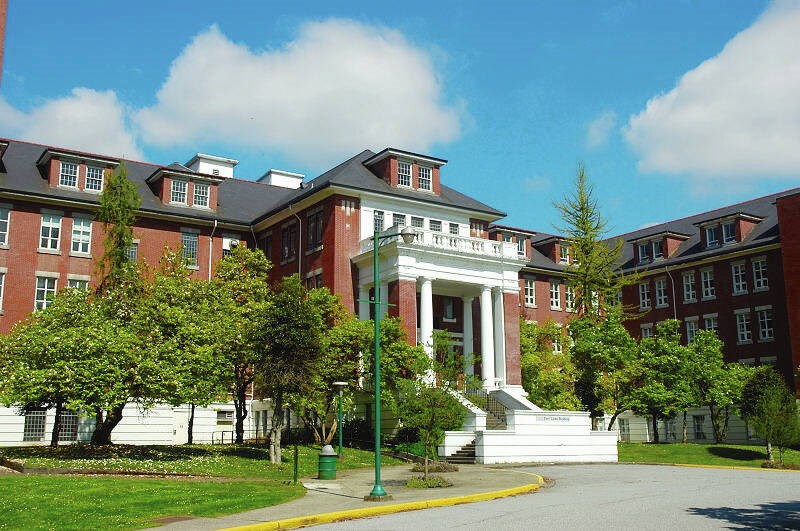Reopening Riverview is not the answer
Re: “Bring back facilities so our streets are safer,” letter, March 30.
It is time to put to bed “Resurrecting Riverview” as a panacea for “downtown street issues.”
Riverview Hospital of the 1960s (previously Essondale — same facility, different name) housed 4,000-plus patients.
Built in the early 1900s, it no longer met the needs of the community or mental-health patients by the 1980s.
The replacement model, still used today, is smaller facilities spread throughout the province. This allows patients with mental-health issues to stay in their own community.
The Red Fish Healing Centre for Mental Health and Addiction on the old Riverview grounds is an example of one of these facilities. I agree that the need for mental-health and addiction treatment is outstripping capacity.
The answer is more money to expand the current system, not a return to systems that were outdated 50 years ago. We do not need a new 4,000-bed Riverview.
The Victoria Police Department says that most downtown crime is commited by a minority of repeat offenders. The courts seem unable to effectively control their behaviour.
Non-voluntary incarceration in an appropriate institution is valid for these individuals. The remaining majority of homeless deserve a more humane approach.
They do not deserve relocation to a non-voluntary facility. What they need is help with homelessness and possibly mental-health and addiction issues. Although they make us feel uncomfortable, that, in itself, is not a crime. They should not be treated as criminals.
Steve Dove
Victoria
That extra money could have made a difference
Friday, March 31, was the magic date by which all ministries have spent their fiscal year’s budget.
Thinking outside the box, how much money did the ministries of Attorney General and/or Solicitor General need to divest themselves of extra monies to meet their targets to fully spend their allotments?
Should either ministry hold a budget surplus, why not think that since all these monies are raised by taxes, could not the deputy ministers and the Victoria police chief enter into a “one-time” agreement to fund the extra officers that Victoria so desperately needs?
I recognize that this would constitute a transfer of funds between provincial and civic authorities, but at the end of the day, such a transfer would greatly enable the Victoria and Esquimalt police to meet their targets and protect communities to the extent the average resident expects the police to discharge their duties.
Eric J. Ronse
Shawnigan Lake
Deal with root causes to cut police costs
Re: “B.C. municipalities on the hook for $145 million in RCMP back pay,” March 31.
Will these municipalities discover that they need to stop throwing money at the RCMP policing of poverty and homelessness and instead get serious about advocating for safe supply and a range of treatment and rehab options for drug users; increased access to psychiatric services for those with mental-health issues; greater provincial investment in truly affordable housing; and regulation of the housing market, including vacancy control?
Dianne Varga
Nanaimo
Downtown issues happening everywhere
Re: “Mental health, drug use must be priorities,” letter, March 31.
I grew up in the Victoria area. I am disheartened to read of the social problems plaguing Victoria’s downtown, but sadly it is happening everywhere.
The experiment to integrate the drug-addicted and mentally ill back into society has been a catastrophic failure. Why it is talking so long for the powers to return to institutionalizing the unfortunates is definitely mind-boggling.
We must be realistic and demand (not urge) all levels of government to take action. Enough is enough.
Paul Crossley
Penticton
History tells us to keep the E&N railway
I am involved with the heritage committee in creating neighbourhood signs for the City of Langley regarding their railway heritage.
The B.C. Electric Railway (Interurban) and the Vancouver, Victoria and Eastern Railway (steam powered) were two railways which passed through Langley City from 1909 to 1950 and 1908 to 1928, respectively.
The Interurban was a hydro-powered electric railway that provided transportation from Vancouver to Chilliwack on a dedicated line. The Interurban offered true rapid transit.
Now we are spending a few billion dollars to go from Surrey to Langley. If the politicians at that time had the foresight to keep the Interurban system for the future, then we would have an electric rail system from Vancouver to Chilliwack.
The demise of the B.C. Electric’s Interurban passenger service originated from the introduction of cars and trucks and new roads making rail service uneconomical at that time.
The history lesson: Please keep the E&N railway as it is a valuable asset now and for the future.
Bruce W. Downing
Langley
SEND US YOUR LETTERS
• Email: [email protected]
• Mail: Letters to the editor, Times Colonist, 201-655 Tyee Rd., Victoria, B.C. V9A 6X5
• Submissions should be no more than 250 words; subject to editing for length and clarity. Provide your contact information; it will not be published. Avoid sending your letter as an email attachment.



